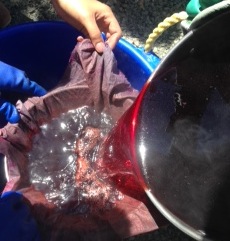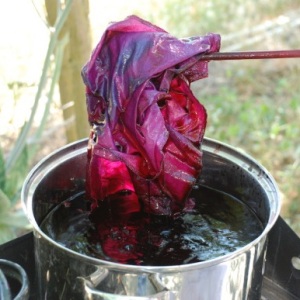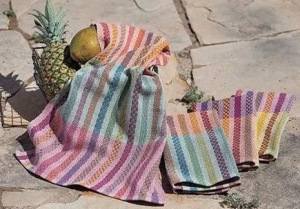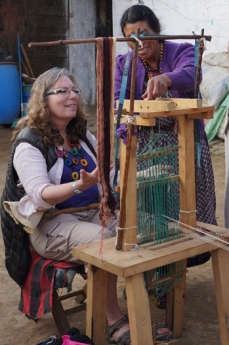a
aDid you know that you can get a beautiful natural dyed RED from bugs? Cochineal (Dactylopius coccus) grows on cacti of the Opuntia family (prickly pear cactus) and is native to tropical and subtropical South America and Mexico.
a
a
a
Recently, Cotton Clouds sponsored a Cochineal Dye Workshop at Meridian Jacobs Farm with owner, Robin Lynde. Rocío Mena Guitterez (our gal from The Natural Dye Project: see her blogs) came from Mexico City to share her knowledge of the process of turning dead bugs into RED! aaa
a
a
a
Lots of tiny Cochineal bugs are ready for us to grind up into a fine red powder. a
a
a
a
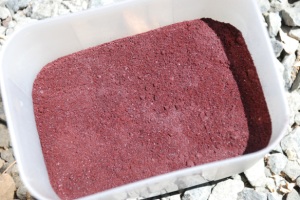 Traditionally, a mortar and pestle is used to turn the dried cochineal bugs into a fine powder, but these modern-day gals resorted to their handy coffee grinder to do the trick in a flash! aaaa
Traditionally, a mortar and pestle is used to turn the dried cochineal bugs into a fine powder, but these modern-day gals resorted to their handy coffee grinder to do the trick in a flash! aaaa
a
a
a
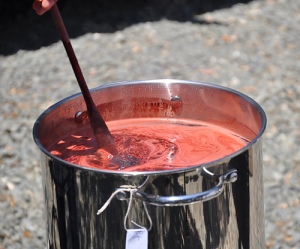 Once the water is hot, the fine powder goes into the pot along with a few natural chemicals and is simmered for about an hour. Although we were all anxious to get our cotton and silk scarves into the dye bath, we took a lunch break and patiently waited for the magic to begin!
Once the water is hot, the fine powder goes into the pot along with a few natural chemicals and is simmered for about an hour. Although we were all anxious to get our cotton and silk scarves into the dye bath, we took a lunch break and patiently waited for the magic to begin!
a
a
a
Ah, pure gold, but this time it’s pure RED! The bath is strained, removing any residue cochineal powder. We goofed, and dropped the strainer and cloth and had to start all over again, but the results was well worth the extra labor!
a
a
a
a
Now the fun of dyeing our pre-mordanted silk and cotton scarves, that Rocio provided, is about to begin! We were so anxious to see the results that we started to pull the fabric out of the dyepot, but Rocío kept warning, “No, no, no! You have to wait!”
a
a
Now the fun of dyeing our pre-mordanted silk and cotton scarves, that Rocio provided, is about to begin! Into the dyepot goes our stamp-designed cotton scarves. We were so anxious to see the results that we kept lifting them out of the pot. “No, no, no!” said Rocio, “leave them in the pot!” a a aa a
At the end of the day, we were all very happy cochineal dyers! Thanks Rocío!
a
If you don’t have time to dye your own cochineal yarns, order our Friendship Towel with Tintes Naturales kit to make towels, vests, jackets, baby blanket and more! The cotton yarns are dyed with cochineal, osage orange, madder and indigo!






